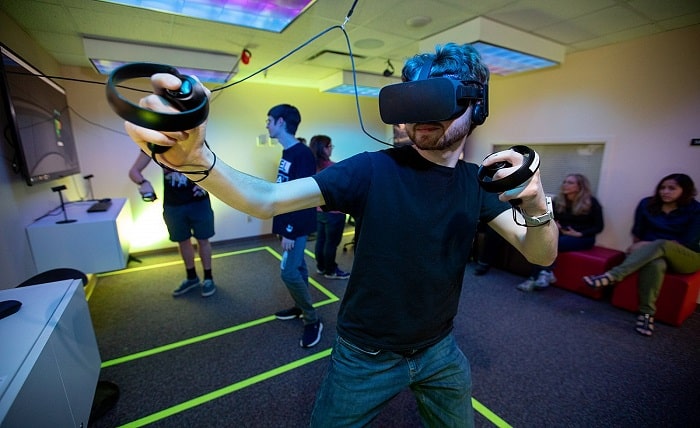Exploring the World of Virtual Reality (VR): An Immersive Technology

Virtual Reality (VR) has been the talk of the town for a few years now. This advanced technology has been taking the world by storm, making its presence felt in various fields. VR has revolutionized the way we interact with digital content, and its impact on the entertainment industry is undeniable. From gaming to education, VR has made its mark and has become a significant part of our lives. In this blog post, we will take a deep dive into the world of VR, exploring its applications, advantages, and challenges.
What is Virtual Reality (VR)?
Virtual Reality (VR) is an immersive technology that simulates a real-world environment, allowing the user to interact with the digital world. The user is transported to a computer-generated environment, and the experience is made realistic by providing them with sensory stimuli, including sight, sound, and touch. VR is created using computer technology, which generates a 3D image that is displayed in front of the user’s eyes. The user wears a VR headset, which covers their eyes and ears and can also include hand controllers to enhance their interaction with the virtual environment.
Applications of Virtual Reality (VR)
VR has found its applications in various fields, including entertainment, gaming, education, healthcare, and even military training.
- Entertainment and Gaming: VR has revolutionized the entertainment and gaming industry, making the experience more immersive and realistic. Games like “Beat Saber” and “Job Simulator” have gained immense popularity and have made VR gaming accessible to a broader audience.
- Education: VR has proved to be an effective tool in education, allowing students to explore and experience various subjects in a virtual environment. With VR, students can visit historical places, explore scientific concepts, and even practice surgical procedures in a safe and controlled environment.
- Healthcare: VR has also found its applications in the healthcare industry, including pain management, exposure therapy, and rehabilitation. VR therapy has proved to be effective in treating patients with anxiety disorders, phobias, and PTSD.
Advantages of Virtual Reality (VR)
- Immersive Experience: VR provides an immersive experience, making the user feel like they are present in a different environment.
- Safe and Controlled Environment: VR allows users to experience dangerous situations or procedures in a safe and controlled environment, making it a valuable tool in fields like healthcare and military training.
- Enhanced Learning: VR enhances the learning experience by providing a visual and interactive environment, making it easier for students to understand complex concepts.
Challenges of Virtual Reality (VR)
- Cost: VR technology can be expensive, making it inaccessible to many people.
- Health Concerns: VR can cause motion sickness, headaches, and eye strain, especially if used for an extended period.
- Lack of Standardization: As VR is a relatively new technology, there is a lack of standardization, making it challenging for developers to create content that is compatible with all VR devices.
Conclusion
Virtual Reality (VR) is an innovative technology that has made its mark in various fields. From gaming to healthcare, VR has found its applications and has provided a unique and immersive experience to its users. Although VR has its challenges, including cost, health concerns, and lack of standardization, its advantages outweigh its disadvantages. As technology continues to evolve, we can expect VR to become more accessible and affordable, allowing more people to experience its benefits. The future of VR is exciting, and we can expect this technology to have a significant impact on our lives in the years to come.
Read more about: cryptobuzzz
Discover the latest tamilmv proxy sites to access your favorite Tamil movies and shows safely and securely, with easy steps for uninterrupted streaming.



